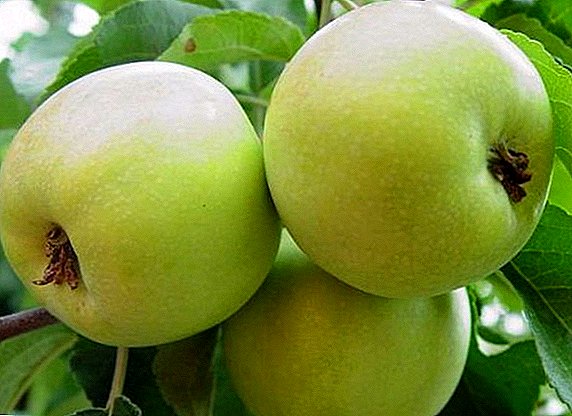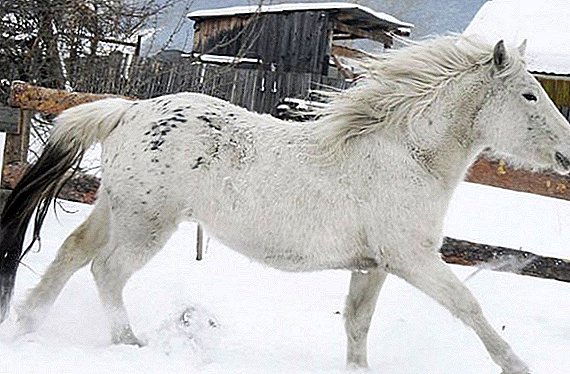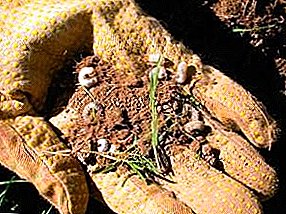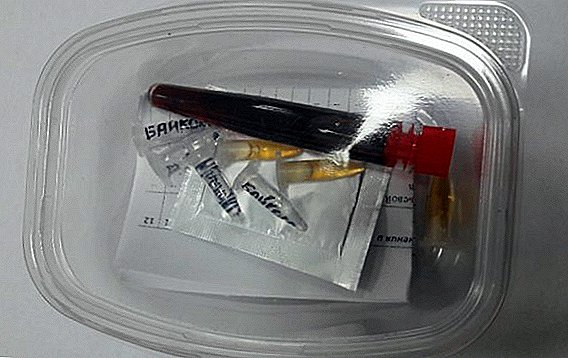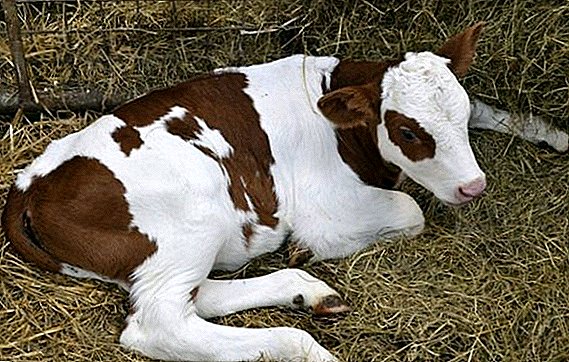 Calves, like adult animals, can be sick, which negatively affects the productivity of the livestock. Non-communicable diseases include various traumatic pathologies or genetic diseases.
Calves, like adult animals, can be sick, which negatively affects the productivity of the livestock. Non-communicable diseases include various traumatic pathologies or genetic diseases.
Umbilical hernia is one of these. Despite the fact that such diseases are not dangerous for others, it is important to know what measures should be taken.
What is this pathology
A hernia is a protrusion of the peritoneum through the umbilical ring, it can be congenital or acquired. Congenital arises due to abnormal development of the fetus in the prenatal period. Pathology is dangerous because the compression of tissues can lead to their rupture, acute inflammatory process and peritonitis.  Diagram of hernia (A) and organ prolapse (B): 1 - hernial orifice; 2 - hernial sac; 3 - hernial content; 4 - outer hernial membrane; 5 - neck of hernia; 6 - hernia body; 7 - the bottom of the hernial bag; 8 - fibrous tissue.
Diagram of hernia (A) and organ prolapse (B): 1 - hernial orifice; 2 - hernial sac; 3 - hernial content; 4 - outer hernial membrane; 5 - neck of hernia; 6 - hernia body; 7 - the bottom of the hernial bag; 8 - fibrous tissue.
Why do calves?
Defects of the tissues of the peritoneum or expansion of the umbilical ring lead to congenital. Acquired may develop as a result of abdominal trauma, for example, as a result of falling and hitting the peritoneum.
Important! The calf with this disease has problems with defecation, so it feeds worse and gains weight poorly. A newborn may die due to inflammation.
What does a hernia look like (manifest) in a calf
 A characteristic feature of the disease is a protrusion on the abdomen in the form of a sac.
A characteristic feature of the disease is a protrusion on the abdomen in the form of a sac.
But if there is no such protrusion, and the animal shows anxiety, does not eat well, experiences pain in the lower abdomen, has problems with emptying the stool, then these symptoms may also indicate the presence of a hernia.
What to do, how to treat
Hernia can be reducible and non-reversible. In a baby up to 1 year old, it can dissolve on its own, therefore it does not require outside intervention.
Did you know? The progenitor of domestic cows is a tour - a large extinct bull. Tours lived throughout Europe and Asia.
Conservative treatment
During the treatment, the veterinarian massages the navel area to relax smooth muscles. Then, easily pressing on the hernia, inserts it into the hole, after which the navel is sealed with tape and put on a bandage.  In order to secure the correct location of the organs, the calf needs to provide a state of rest and a small amount of food.
In order to secure the correct location of the organs, the calf needs to provide a state of rest and a small amount of food.
Important! Do not try to right hernia yourself! You cannot know for sure whether it is reducible.
Surgical intervention
Surgical treatment of the disease in the event that from the umbilical ring protrudes a large part of the intestine or it was pinched. To prevent tissue necrosis, an operation is carried out to correct the defect. The peritoneum is cut under local anesthesia, the hernial sac is removed, and the internal organs are reset. Then the incision is sutured.
The peritoneum is cut under local anesthesia, the hernial sac is removed, and the internal organs are reset. Then the incision is sutured.
Read about how to choose the calf when buying, how to feed the animal and what to do if it is lethargic and does not eat well.
Postoperative care
The postoperative period lasts 10 days. At this time, the animal needs to ensure peace. The litter in the stall must be dry and clean, drink - plentiful, and food - easily digestible. The postoperative period may be accompanied by inflammation and fever. In order not to miss this moment and treat inflammation in time, the calf is measured daily by temperature. Normal body temperature - 38-40 degrees. If an inflammatory process is detected, a course of treatment will be prescribed.  Hernia does not directly threaten the health of the calf, but can lead to unpleasant consequences, therefore, when signs of illness appear, it is necessary to invite a veterinarian.
Hernia does not directly threaten the health of the calf, but can lead to unpleasant consequences, therefore, when signs of illness appear, it is necessary to invite a veterinarian.


